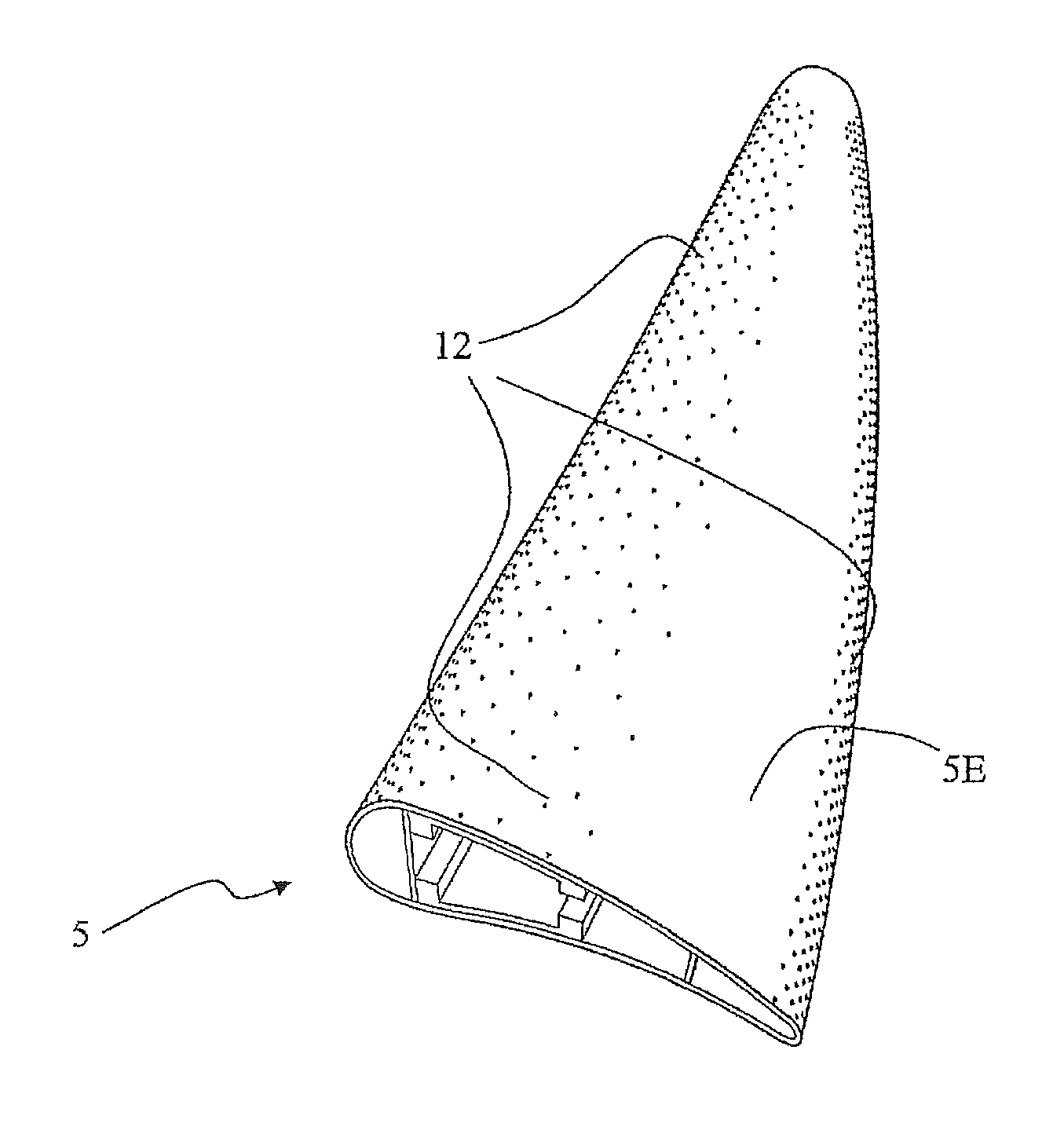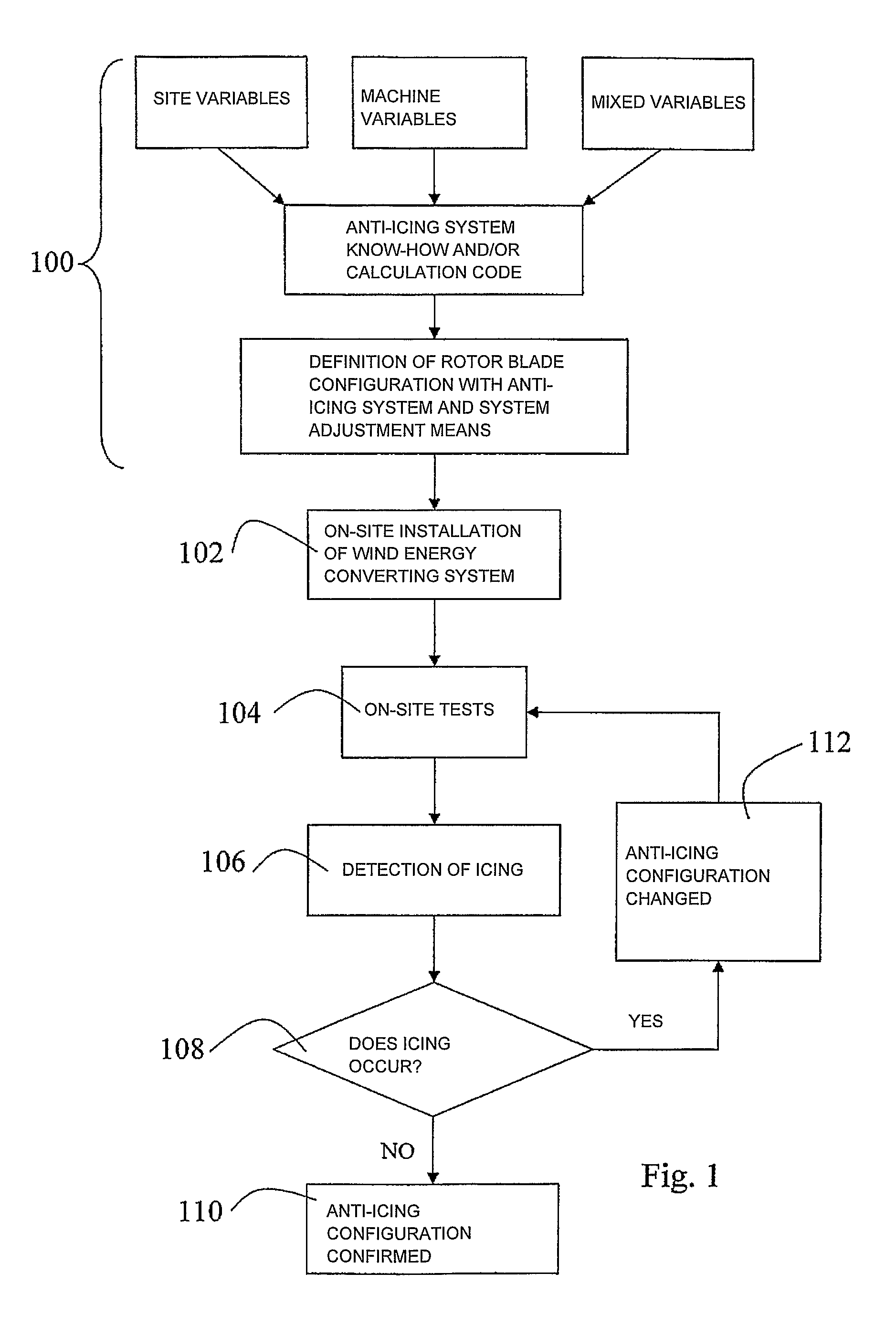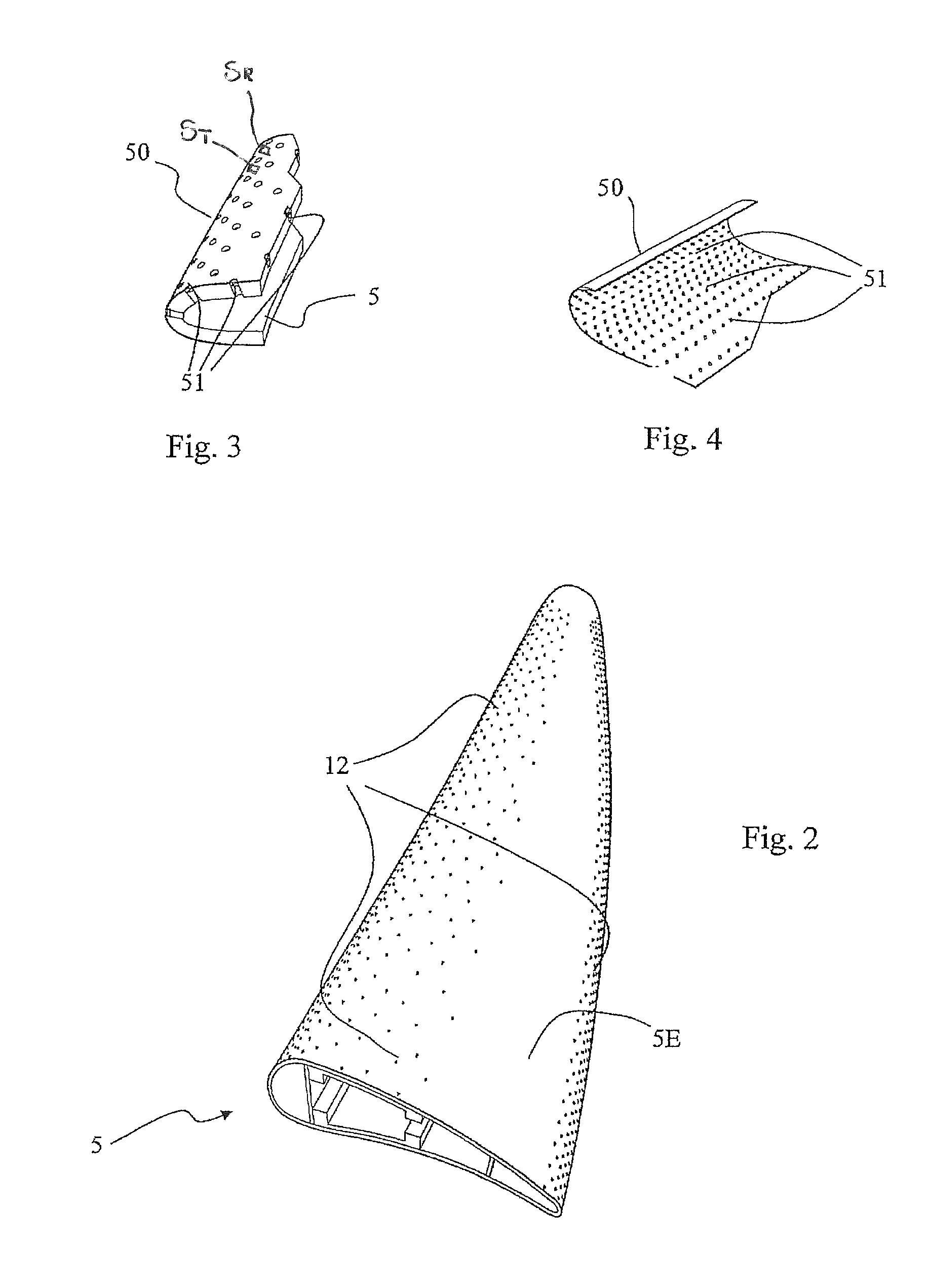Method for implementing wind energy converting systems
a technology of wind energy and conversion systems, applied in the direction of rotors, vessel construction, marine propulsion, etc., can solve the problems of poor efficiency of adopted solutions, difficult to design and manufacture a wecs fitted with a “de-icing” and/or “anti-icing” system, and difficult to identify regions. , to achieve the effect of short implementation time, easy adaptation and easy implementation
- Summary
- Abstract
- Description
- Claims
- Application Information
AI Technical Summary
Benefits of technology
Problems solved by technology
Method used
Image
Examples
Embodiment Construction
[0040]FIG. 1 shows a flow chart relating to a method for implementing WECS fitted with an anti-icing and de-icing system in accordance with the respective installation sites.
[0041]Said method is based on the following steps:
[0042]a) pre-arranging a wind rotor comprising blades, an anti-icing system, means for adjusting the anti-icing system (step 100);
[0043]b) installing the pre-arranged wind rotor on a test site (step 102);
[0044]c) carrying out at least one operation test of the wind rotor, preferably in critical icing conditions for the location where the WECS is to be installed (step 104);
[0045]d) detecting parameters useful for determining the presence or absence of ice on the blades and / or for establishing the phenomenology under examination, such as temperature and humidity on the blade surface (step 106), through sensors known in the art;
[0046]e) adjusting the anti-icing system by means of its adjustment means (step 112), if ice is detected (step 108);
[0047]f) repeating the p...
PUM
| Property | Measurement | Unit |
|---|---|---|
| temperatures | aaaaa | aaaaa |
| temperature | aaaaa | aaaaa |
| temperature | aaaaa | aaaaa |
Abstract
Description
Claims
Application Information
 Login to View More
Login to View More - R&D
- Intellectual Property
- Life Sciences
- Materials
- Tech Scout
- Unparalleled Data Quality
- Higher Quality Content
- 60% Fewer Hallucinations
Browse by: Latest US Patents, China's latest patents, Technical Efficacy Thesaurus, Application Domain, Technology Topic, Popular Technical Reports.
© 2025 PatSnap. All rights reserved.Legal|Privacy policy|Modern Slavery Act Transparency Statement|Sitemap|About US| Contact US: help@patsnap.com



